You are the universe, expressing itself as a human for a little while. - Eckhart Tolle
Greetings, fellow scientist.
We have discussed how a star may end its life in enormous stellar explosions like Supernovae, Hypernovae and GRBs. While these explosions result in the death of massive stars, they give birth to one of the most extreme objects in the universe: Neutron Stars
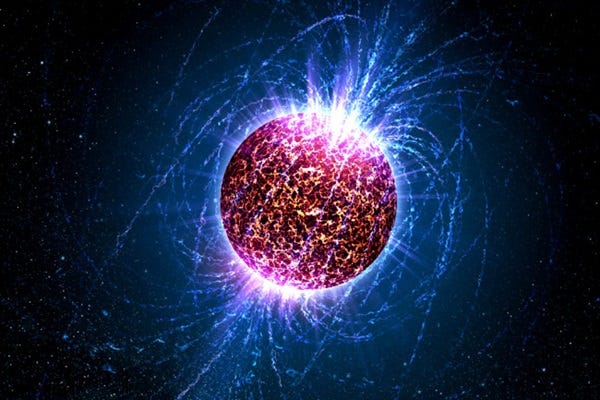
A Neutron star is a city-sized stellar object, collapsed core of a massive supergiant star.
It has a mass of about 1.4 solar masses, the same as the Chandrasekhar limit. Except for the black holes, neutron stars are the densest objects in the universe.
Discovery
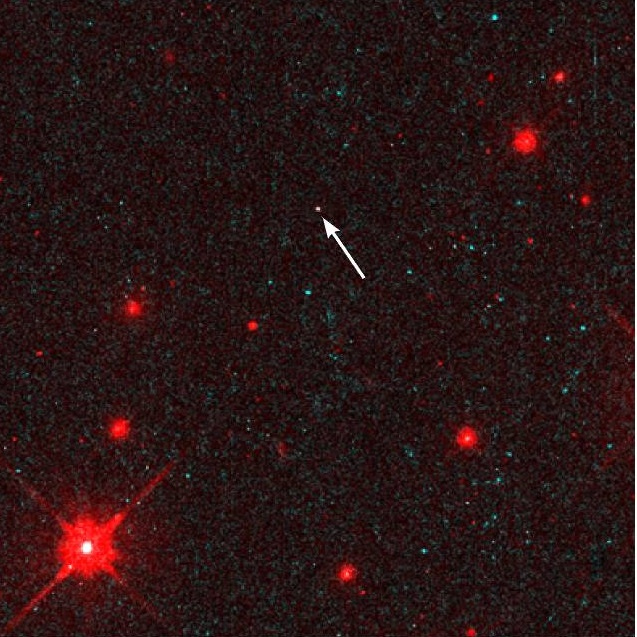
Fritz Zwicky first proposed Neutron Stars in December 1933 at the meeting of the American Physical Society. In 1967, Franco Pacini pointed out that if a neutron star were spinning and had strong magnetic fields, it would emit electromagnetic waves.
Two radio astronomers Antony Jewish and Jocelyn Bell discovered radio pulses from rapidly spinning neutron stars (known as pulsars). For this discovery, they were awarded the Nobel Prize in Physics in 1974.

Structure and Properties
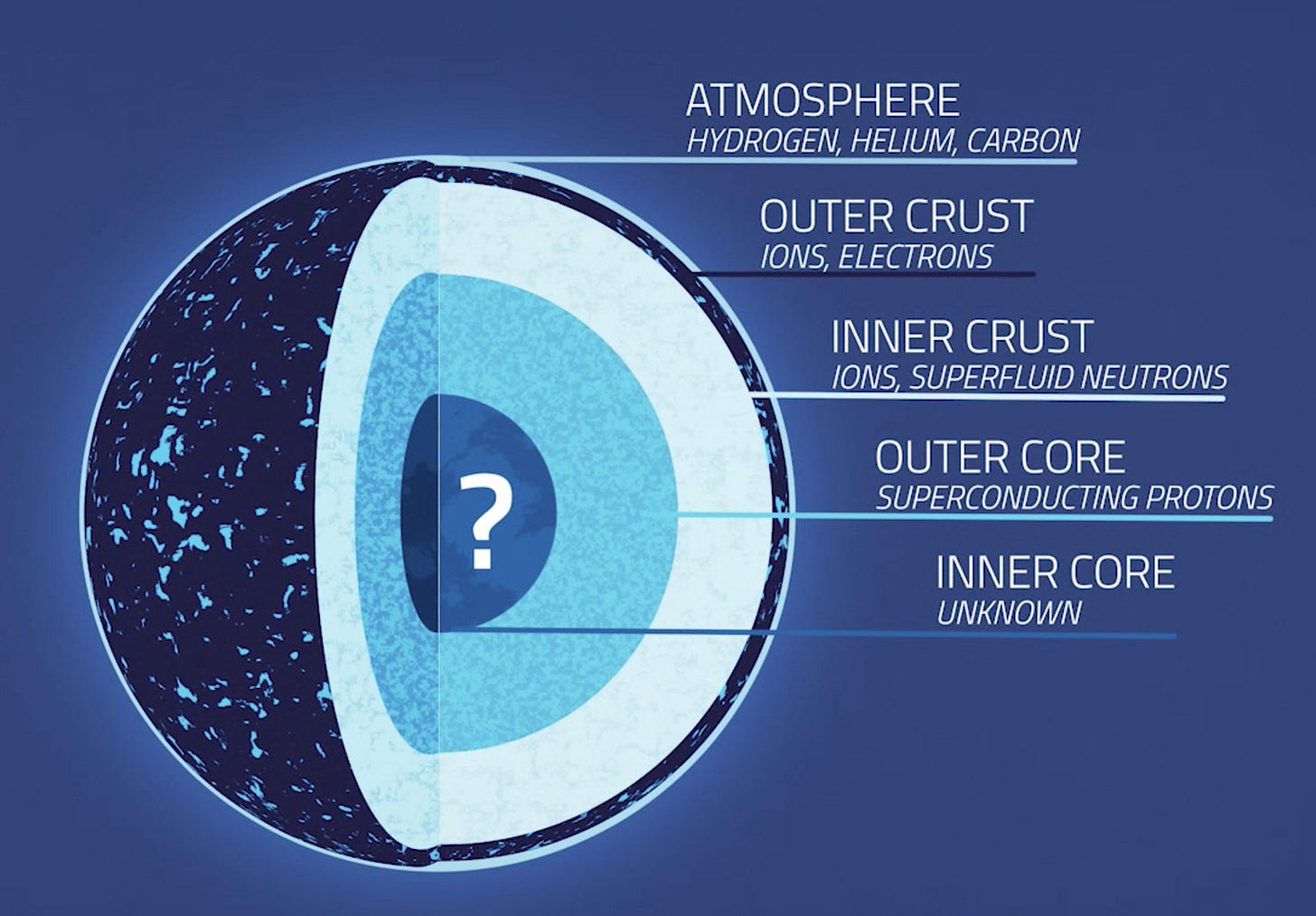
The crust (surface) of the neutron star is composed of ordinary atomic nuclei with a sea of electrons floating through the gaps between them.
As we go deeper, the pressure increases enormously. At such depths, the protons and electrons have combined to form neutrons(hence the name ‘Neutron Star’) and are densely packed.
Deeper still, in the core, we find nuclear pasta, which is possibly the strongest material in the universe.
Nuclear Pasta is theorized to exist in many phases, named on the various varieties of pasta you eat in your daily lives. But hey, don’t even think of eating nuclear pasta, you may have digestion problems the next morning. 😉
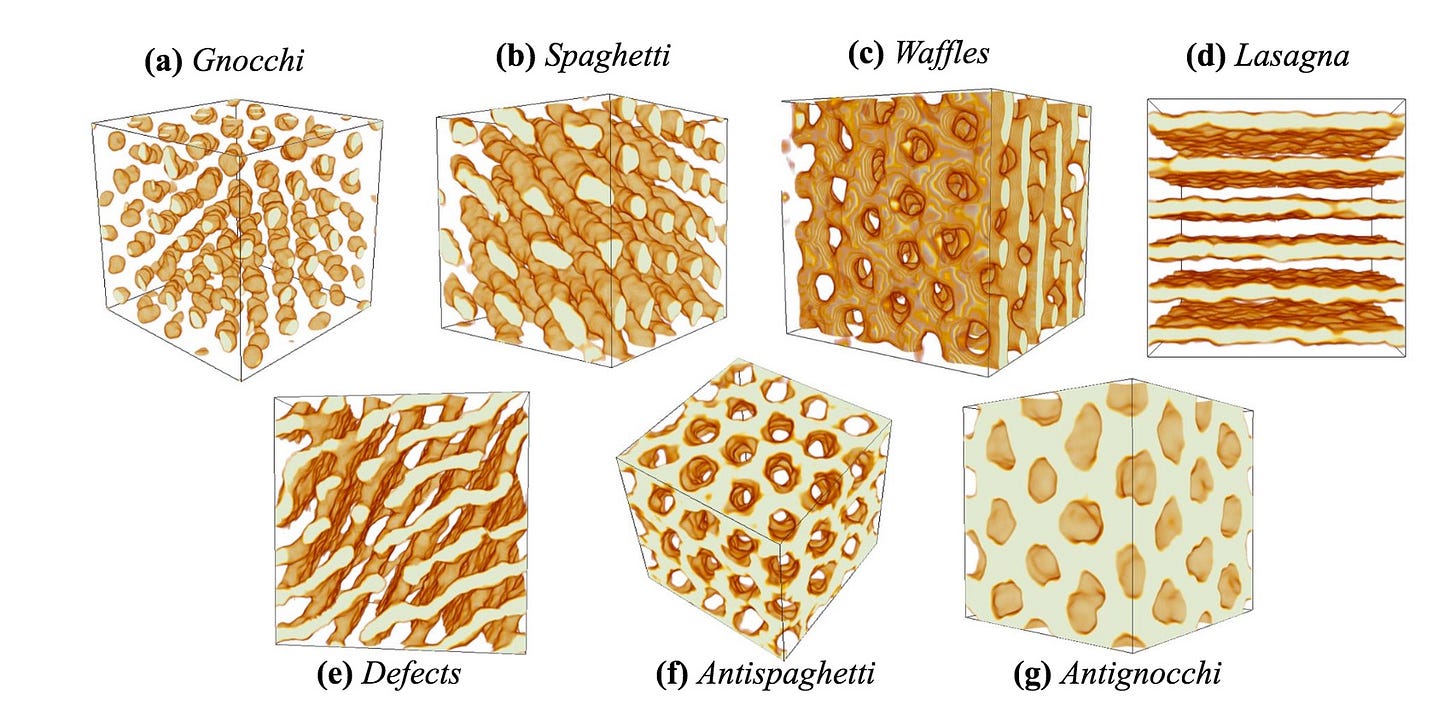
The gravitational pull of a neutron star is 100 billion times stronger than that of Earth, so large that it bends the path of the light, allowing us to see its backside, a phenomenon known as Gravitational Lensing.
Most of the neutron stars have a temperature of a million degrees, hot enough to emit X-rays. The magnetic field is at least 100 million times stronger than that of the Earth. Neutron Stars with such strong magnetic fields are called Magnetars.

As the core of a slowly rotating object collapses to form a neutron star, the rate of rotation increases—similar to when a dancer starts spinning faster her arms are pulled inwards. They can spin as fast as 43,000 times per minute!
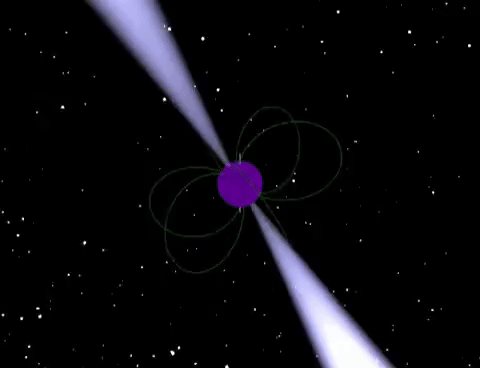
As it spins, magnetic poles emit electromagnetic radiation beams that can be observed only if they are directed towards the earth, appearing as a pulse. Such a type of neutron star is named Pulsar.
Mechanism of Formation
In the last evolutionary stages of a massive star, gravity becomes so large that electrons no longer orbit the nucleus in their fixed orbits but rather squeeze into the neutrons along with the protons.
The result is a supernova explosion. What remains is an enormously dense core of tightly packed neutrons known as a neutron star.
If the supernova remnant has a mass greater than 3 solar masses, it would collapse further to become a black hole.

If two neutron stars are part of a binary system, they would close in with time because they would emit gravitational waves as they orbit each other. Ultimately when they collide, they produce another tremendous stellar explosion known as a kilonova.
If the merging neutron stars have enough mass, they collide to form a black hole. The merger of neutron stars is believed to be one of the pathways for short GRBs to occur.
The impact of the discovery of these extreme stellar remnants has been immense. We now understand at least partially; the mechanisms of the formation of black holes; the most mysterious objects in the universe which we will discuss next.
You May Also Read:





Gravitational lensing is a phenomenon that proves the existence of dark matter and from what I have read from the article, neutron stars are composed of known matter. So, Does the ordinary matter; of which some 15-20% (if I am not wrong) of our universe is composed of; can also show gravitational lensing?
I have been reading your Bohring articles for 1 month...very interesting articles every time👍👍. Looking forward to the exciting upcoming articles.